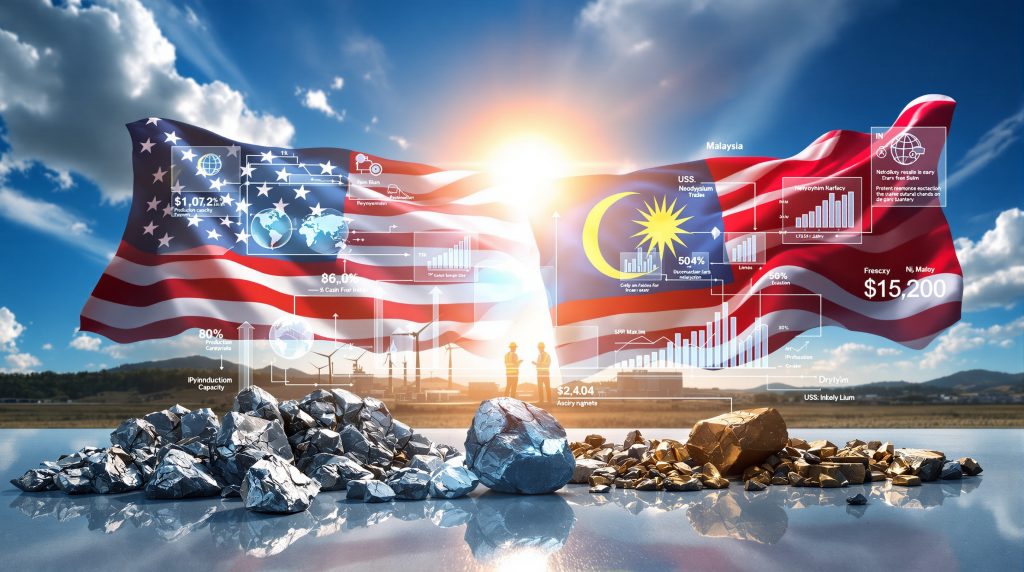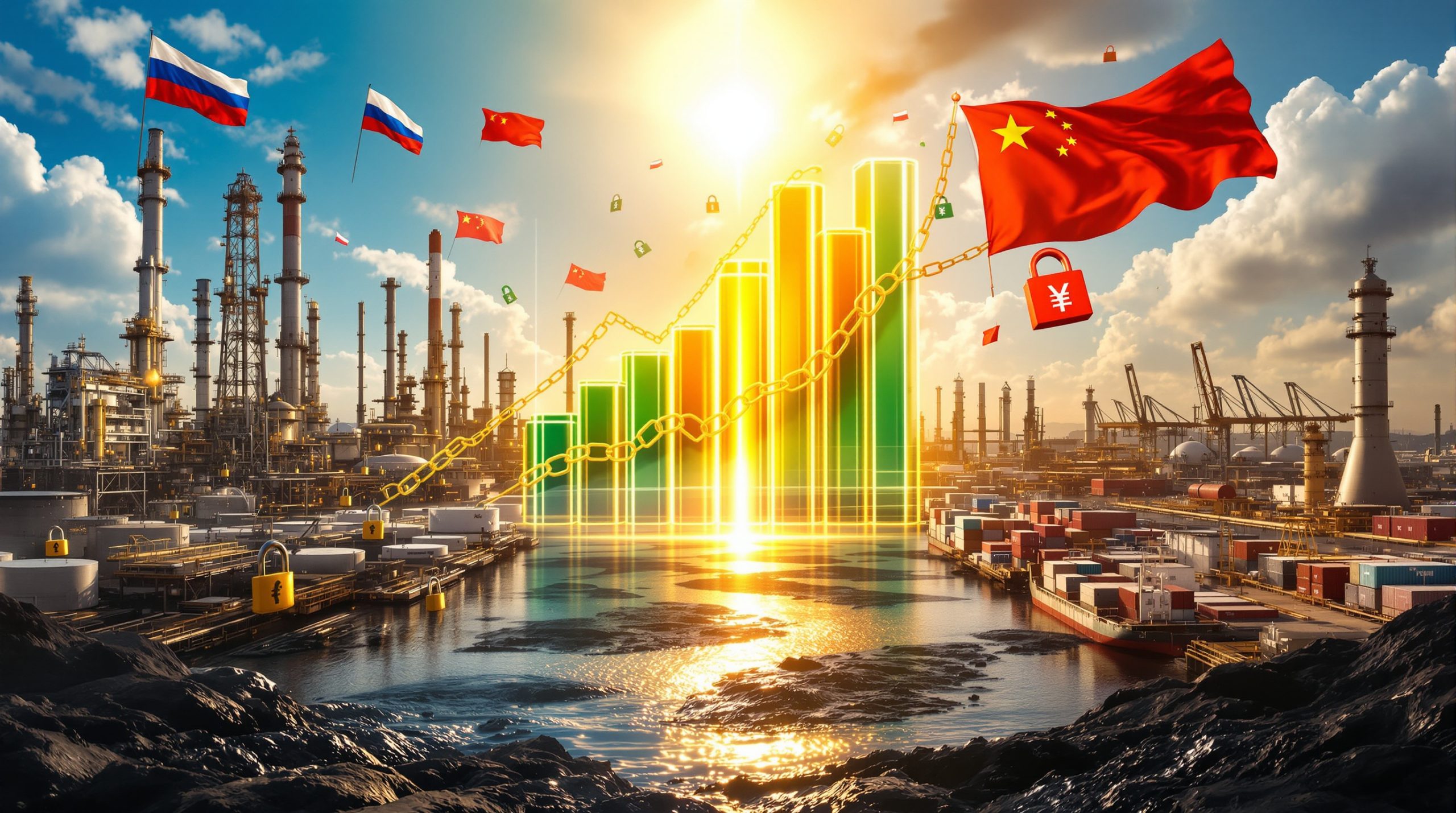The U.S.–Malaysia rare earth trade deal represents a strategic pivot in global critical minerals energy transition supply chains. This comprehensive agreement between President Trump and Malaysian Prime Minister Anwar Ibrahim establishes new pathways for accessing rare earth elements outside China's processing dominance. The deal encompasses significant trade provisions, technological partnerships, and supply chain diversification initiatives that could reshape how America sources these critical materials.
Understanding the Strategic Partnership Framework
Core Components of the Critical Minerals Agreement
The trade pact eliminates several key barriers that previously hindered U.S. access to Malaysian rare earth resources. Tariff reductions create favourable economic conditions for American companies seeking alternative suppliers, while streamlined regulatory frameworks accelerate project development timelines.
Fast-track development protocols enable companies like DTEC Mineral & Metal Technology to advance their operations with reduced bureaucratic delays. The agreement establishes clear licensing frameworks that extend through 2030, providing operational certainty for long-term investments in processing infrastructure.
Unrestricted magnet trade provisions specifically benefit defence contractors and technology manufacturers who require steady supplies of permanent magnets containing dysprosium and terbium. These elements are essential for military applications, electric vehicle motors, and renewable energy systems.
Commercial Scale and Economic Impact
The agreement's economic implications extend across multiple industrial sectors. Aerospace manufacturers gain access to rare earth elements needed for jet engines, guidance systems, and advanced materials. Semiconductor production benefits from stable supplies of yttrium and lanthanum used in specialised manufacturing processes.
Energy infrastructure development receives support through improved access to permanent magnet materials essential for wind turbine generators and grid storage systems. The timeline for implementation phases includes immediate tariff adjustments, followed by infrastructure development milestones through 2027.
Companies operating under this framework plan to establish U.S. metallisation capabilities by 2026, with full production scaling targeted for 300 metric tons annually by 2027. These projections represent significant capacity additions to non-Chinese rare earth processing.
Disclaimer: Production targets represent corporate projections and may vary based on market conditions, regulatory approvals, and technological developments.
How Does Malaysia's Rare Earth Position Compare Globally?
Reserve Statistics and Production Capacity
| Country | Proven Reserves (Million Tonnes) | Global Market Share | Processing Capability |
|---|---|---|---|
| Malaysia | 16+ | 13% supply | Limited domestic processing |
| China | 44 | 90% processing dominance | Complete supply chain |
| Australia | 4.2 | Raw material focus | Minimal processing |
China maintains overwhelming control over rare earth processing infrastructure, handling approximately 85-95% of global refining capacity according to U.S. Geological Survey data. This concentration creates significant supply chain vulnerabilities for consuming nations.
Australia's reserves focus primarily on light rare earth elements extracted through hard rock mining operations. While substantial, Australian resources require extensive processing in other countries, often China, before reaching end-use applications.
Malaysia's position centres on ionic clay deposits that naturally concentrate heavy rare earth elements. These deposits offer advantages in processing efficiency and environmental impact compared to traditional hard rock mining operations.
Malaysia's Ionic Clay Advantage
Ionic clay deposits represent a distinct geological formation where rare earth elements concentrate through natural weathering processes. Unlike hard rock mining that requires crushing and extensive beneficiation, ionic clay processing involves chemical leaching techniques that directly extract target elements.
The technical advantages include:
• Higher heavy rare earth concentrations – Natural weathering processes concentrate dysprosium, terbium, and yttrium
• Lower energy processing requirements – Chemical extraction eliminates crushing and grinding operations
• Reduced solid waste generation – Minimal tailings compared to hard rock processing
• Selective element recovery – Ionic adsorption allows targeted extraction of specific rare earths
Environmental benefits stem from the in-situ leaching process that minimises surface disturbance. However, these advantages depend heavily on proper water management and chemical handling protocols to prevent groundwater contamination.
Processing efficiency for heavy rare earth elements can exceed 90% recovery rates in well-designed ionic clay operations. This compares favourably to hard rock processing where HREE recovery often ranges from 60-80% depending on ore composition.
What Makes This Deal Different from Previous Trade Agreements?
Strategic Departure from China-Centric Supply Chains
The U.S.–Malaysia rare earth trade deal implements a friend-shoring strategy that prioritises political alignment alongside economic considerations. This approach differs from pure cost optimisation by incorporating geopolitical stability factors into supply chain decisions.
Historical precedent demonstrates the risks of concentrated supply chains. The 2010 China export restrictions resulted in global rare earth price increases of 300-600% within twelve months. Similar disruptions occurred during COVID-19 when processing delays created supply interruptions lasting 2-3 months.
Risk mitigation strategies embedded in this agreement include multiple supplier development across geographically dispersed locations, strategic stockpile coordination between partner nations, emergency supply protocols for critical defence applications, and technology transfer provisions to build domestic processing capabilities.
Comparisons with existing partnerships reveal distinct differences. The Australia-U.S. Critical Minerals MOU focuses primarily on raw ore supply rather than processed materials. Canada's critical minerals cooperation emphasises cobalt and lithium with limited rare earth involvement.
Non-Exclusivity Provisions and Balanced Diplomacy
Malaysia's commitment to maintaining trade relationships with all partners creates a balanced approach that avoids zero-sum geopolitical positioning. This non-exclusivity framework allows Malaysia to serve multiple markets simultaneously while developing its processing capabilities.
The agreement specifically avoids language that would restrict Malaysian sales to other countries. This diplomatic balance helps maintain regional stability within ASEAN while supporting U.S. supply chain objectives.
Regional implications include potential opportunities for other Southeast Asian nations to develop similar arrangements. Vietnam, Thailand, and Indonesia possess ionic clay deposits that could support comparable partnerships under appropriate frameworks.
Which Industries Benefit Most from Enhanced Rare Earth Access?
Defence and Aerospace Applications
Military applications require the highest purity rare earth materials with stringent quality specifications. Dysprosium enhances the high-temperature performance of permanent magnets in jet engines and hypersonic weapon systems. Terbium enables advanced sensor technologies and precision guidance equipment.
The U.S. Department of Defence consumes approximately 250-300 tonnes of rare earths annually across all applications. Current domestic production meets less than 5% of defence requirements for heavy rare earth elements, creating strategic vulnerability.
Critical defence applications include permanent magnet motors for advanced aircraft and naval systems, precision guidance systems requiring high-temperature magnet stability, electronic warfare equipment utilising specialised rare earth alloys, and communications systems dependent on rare earth-based components.
Supply chain security for defence applications necessitates qualified suppliers that meet strict quality standards and security clearances. The U.S.–Malaysia rare earth trade deal creates pathways for developing such qualified alternatives to Chinese suppliers.
Clean Energy and Electric Vehicle Manufacturing
Electric vehicle production represents one of the fastest-growing sources of rare earth demand. Each EV motor requires 0.5-1.0 kg of neodymium and praseodymium for permanent magnet construction. Global EV production reached 10.4 million units in 2023, consuming approximately 5,200-10,400 tonnes of these critical elements.
International Energy Agency projections indicate EV production will reach 18-20 million units annually by 2030. This growth translates to rare earth demand of 9,000-20,000 tonnes annually for the automotive sector alone.
Wind turbine manufacturing adds substantial demand through direct-drive generators that eliminate mechanical gearboxes. These systems require 200-300 kg of permanent magnets per turbine, with global installations adding approximately 100 GW of capacity annually.
Furthermore, the deployment of modern mine planning technologies helps optimise extraction and processing operations. U.S. clean energy targets create specific supply requirements including 50% EV market share by 2030 requiring approximately 5 million units annually.
Electronics and Telecommunications
5G infrastructure deployment drives demand for rare earth permanent magnets in radiofrequency power amplifiers and base station equipment. Global 5G installations reached 2.7 million base stations as of 2024, with projections indicating 4.5 million by 2030.
Each base station requires approximately 5-10 kg of rare earth magnets for optimal performance. The total 5G infrastructure market represents demand for 13,500-45,000 tonnes of rare earth materials over the deployment period.
Semiconductor manufacturing utilises rare earth elements in specialised applications including high-k dielectric materials and polishing compounds. The global semiconductor equipment market valued at $90-100 billion annually incorporates an estimated $1-2 billion in rare earth components.
Consumer electronics maintain steady demand through hard disk drives, smartphone motors, and laptop cooling systems. Global smartphone production of 1.2 billion units annually requires approximately 60-120 tonnes of rare earth materials across all applications.
How Will This Agreement Transform Regional Supply Chain Dynamics?
Processing Infrastructure Development Plans
Malaysia's domestic refining capacity expansion represents a critical component of supply chain transformation. Current processing capabilities remain limited, requiring substantial infrastructure investments to achieve meaningful production volumes.
DTEC Mineral & Metal Technology plans to establish comprehensive processing facilities capable of handling all 17 rare earth elements. The company's ionic clay separation technology targets 300 metric tons annual production by 2027, representing a significant addition to non-Chinese processing capacity.
Infrastructure development requirements include chemical processing plants for ionic clay beneficiation, separation facilities for individual rare earth element isolation, metallisation equipment for producing high-purity metals and alloys, and quality control laboratories meeting international certification standards.
Technology transfer opportunities create pathways for Malaysian engineers and technicians to develop expertise in rare earth processing. Joint venture frameworks facilitate knowledge sharing while protecting proprietary technologies.
Investment requirements for full supply chain integration exceed several billion dollars across multiple phases. Private capital, government incentives, and international development financing contribute to funding these infrastructure projects.
Competitive Response from Other Suppliers
Chinese rare earth producers face potential market share erosion as alternative suppliers develop processing capabilities. Historical responses to competitive threats include price reductions, technology advancement, and diplomatic pressure on customer nations.
Other Southeast Asian nations possess similar ionic clay deposits that could support comparable developments. Vietnam maintains the largest ionic clay reserves outside China at approximately 22 million tonnes. Thailand and Indonesia also possess significant deposits awaiting development.
In addition, the US–China trade war impact continues to influence global supply chain strategies. Global pricing mechanisms may experience volatility during the transition period as new supply sources achieve commercial production.
Competitive advantages for Malaysian operations include political stability, English-language capabilities, and established trade relationships with Western nations. These factors support long-term partnerships with consuming countries seeking reliable suppliers.
What Are the Environmental and Regulatory Implications?
Sustainability Standards and Best Practices
Environmental monitoring requirements embedded in the U.S.–Malaysia rare earth trade deal establish frameworks for responsible mining and processing operations. These standards address water management, chemical handling, and waste disposal protocols specific to ionic clay processing.
Ionic clay extraction offers inherent environmental advantages compared to hard rock mining including minimal surface disturbance through in-situ leaching techniques, lower energy consumption eliminating crushing and grinding operations, reduced solid waste generation compared to conventional ore processing, and selective extraction minimising unnecessary material handling.
However, environmental benefits depend entirely on implementation practices. Proper groundwater protection, chemical containment, and restoration protocols are essential for sustainable operations.
Community impact assessment protocols ensure local populations receive fair compensation and environmental protection. Moreover, mining sustainability practices are becoming increasingly important for securing social licence to operate.
Regulatory Harmonisation Between Nations
Export control coordination mechanisms align U.S. and Malaysian regulations governing critical minerals trade. These frameworks establish consistent quality standards, security protocols, and documentation requirements for cross-border transactions.
Quality assurance and certification processes ensure rare earth materials meet specifications for defence, aerospace, and critical infrastructure applications. Independent testing laboratories verify composition, purity levels, and contamination absence.
Dispute resolution frameworks provide structured processes for addressing trade disagreements, quality concerns, and contractual disputes. These mechanisms support long-term relationships by establishing clear procedures for conflict resolution.
Regulatory alignment reduces administrative burdens for companies operating across both jurisdictions while maintaining appropriate oversight of critical mineral flows.
When Will the Agreement's Benefits Become Apparent?
Short-Term Implementation Milestones (2025-2026)
Immediate tariff reduction effects create favourable economic conditions for rare earth trade between the United States and Malaysia. Companies can begin leveraging these advantages as soon as regulatory approvals are completed and commercial contracts are finalised.
Initial commercial contract announcements are expected within 6-12 months following the agreement's ratification. These contracts will likely focus on established rare earth products rather than new processing capabilities still under development.
Regulatory approval timelines vary depending on the specific applications and end-use sectors. Defence-related contracts require additional security clearances and qualification procedures that may extend approval periods to 12-18 months.
Medium-Term Production Scaling (2027-2029)
Projected annual production capacity increases depend on successful infrastructure development and technology deployment. DTEC MMT's target of 300 metric tons annually by 2027 represents ambitious scaling that requires substantial capital investment and operational expertise.
Infrastructure development completion targets align with production ramp-up schedules. Processing facilities, separation equipment, and metallisation capabilities must achieve operational status to support planned production volumes.
Market share redistribution expectations indicate gradual shifts away from Chinese suppliers toward diversified sources. This transition occurs over multiple years as new suppliers demonstrate reliability, quality, and cost competitiveness.
Long-Term Strategic Outcomes (2030+)
Full supply chain independence metrics measure the agreement's ultimate success in reducing critical mineral vulnerabilities. Success indicators include domestic processing capacity, strategic reserve levels, and supplier diversification achievements.
Regional hub development transforms Malaysia into a significant rare earth processing center serving multiple markets. This outcome requires sustained investment, technology advancement, and political stability over the implementation period.
Geopolitical stability measurements assess whether diversified supply chains reduce the potential for supply disruptions and economic coercion. Long-term success depends on maintaining multiple qualified suppliers across different geographic regions.
How Does This Deal Address Previous Supply Chain Vulnerabilities?
Lessons from Past Rare Earth Market Disruptions
The 2010 China export restrictions demonstrated the catastrophic risks of concentrated supply chains. Global rare earth prices increased 300-600% within twelve months when China halted exports during a territorial dispute with Japan. Recovery required several years and permanent market restructuring.
COVID-19 supply chain stress tests revealed ongoing vulnerabilities despite diversification efforts. Processing delays in China resulted in 2-3 month supply interruptions for non-Chinese customers, with spot prices for dysprosium and terbium increasing 40-80% during peak disruption periods.
Trade war implications for critical mineral access highlighted the intersection between economic policy and national security concerns. Tariff disputes created uncertainty that discouraged long-term supply agreements and infrastructure investments.
Risk Diversification Strategies
Multiple supplier development approaches require coordinated efforts across geographic regions and technological platforms. The U.S.–Malaysia rare earth trade deal represents one component of broader diversification initiatives including domestic production, recycling, and substitution research.
Strategic stockpile considerations balance inventory costs against supply security benefits. Government reserves, private stockpiles, and industry buffer stocks collectively provide protection against short-term disruptions while longer-term alternatives develop.
Emergency supply protocols establish procedures for prioritising critical applications during supply shortages. Defence requirements, infrastructure maintenance, and essential services receive priority allocation during crisis periods.
Important Note: Supply chain diversification requires sustained commitment and investment over multiple years. Initial agreements create frameworks for cooperation, but achieving meaningful supply security depends on successful implementation and operational performance.
What Challenges Could Limit the Agreement's Success?
Technical and Infrastructure Hurdles
Processing technology transfer complexities require careful intellectual property protection while enabling operational success. Companies must balance proprietary technology security with the knowledge transfer necessary for establishing viable operations in Malaysia.
Skilled workforce development represents a significant challenge for scaling rare earth processing operations. Technical expertise in ionic clay beneficiation, element separation, and metallisation requires specialised training that may take years to develop locally.
Capital investment coordination challenges arise from the substantial financing requirements for processing infrastructure. Multiple funding sources, government incentives, and private investment must align to support billion-dollar facility developments.
Key technical obstacles include scale-up risks from pilot operations to commercial production, quality consistency across varying feedstock compositions, environmental compliance with evolving regulatory standards, and technology integration across complex processing chains.
Geopolitical and Market Risks
Potential Chinese market response scenarios include competitive pricing, technology restrictions, and diplomatic pressure on partner nations. Historical precedent suggests Chinese producers may attempt to maintain market dominance through strategic responses to competitive threats.
Regional political stability considerations affect long-term investment security and operational continuity. Changes in government policies, trade relationships, or regional conflicts could disrupt planned supply chain developments.
According to a recent White House fact sheet, the agreement aims to strengthen bilateral trade while maintaining regional stability. However, global demand volatility factors create market uncertainty that affects investment decisions and production planning.
Additionally, a comprehensive report by the Malaysian government outlines specific provisions for maintaining competitive export conditions while ensuring sustainable development practices.
Disclaimer: Market projections and geopolitical assessments involve substantial uncertainty and speculation. Actual outcomes may differ significantly from current expectations based on evolving conditions and unforseen developments.
Evaluating the Deal's Long-Term Strategic Value
Success Metrics and Performance Indicators
Quantifiable targets for supply chain diversification provide measurable benchmarks for assessing the agreement's effectiveness. Success indicators include the percentage of U.S. rare earth consumption sourced from non-Chinese suppliers, processing capacity additions outside China, and strategic reserve accumulation levels.
Economic impact measurements encompass trade volume growth, job creation in both nations, and technology transfer achievements. Bilateral trade statistics, employment data, and patent applications provide objective measures of commercial success.
Strategic autonomy advancement benchmarks evaluate progress toward reduced critical mineral dependencies. These metrics include domestic processing capacity, supplier diversity indices, and emergency supply capability assessments.
Broader Implications for Critical Mineral Security
Template potential for similar agreements with other nations creates opportunities for expanding supply chain diversification beyond the U.S.–Malaysia rare earth trade deal. Vietnam, Thailand, and other resource-rich countries could develop comparable partnerships under appropriate frameworks.
Integration with existing U.S. critical minerals strategy ensures coordinated approaches across multiple initiatives. The National Defense Authorization Act, Infrastructure Investment and Jobs Act, and Inflation Reduction Act provide complementary policy support for supply chain security objectives.
Contribution to global supply chain resilience extends beyond bilateral benefits to support broader market stability. Diversified supply sources reduce systemic risks that affect all consuming nations regardless of their specific supplier relationships.
Consequently, the development of an European CRM facility demonstrates similar strategic thinking among other developed economies seeking supply chain independence.
The agreement represents a significant step toward addressing critical mineral supply vulnerabilities while requiring sustained implementation efforts to achieve full strategic objectives. Success depends on continued political support, adequate financing, and effective operational execution across multiple phases of development.
Long-term value creation requires balancing economic efficiency with strategic security considerations. The U.S.–Malaysia rare earth trade deal provides a framework for achieving both objectives through carefully structured partnerships that serve mutual interests while strengthening global supply chain resilience.
Ready to Capitalise on Critical Mineral Market Opportunities?
Discovery Alert's proprietary Discovery IQ model delivers real-time alerts on significant ASX mineral discoveries, instantly empowering investors to identify actionable opportunities ahead of the broader market. Understand why major mineral discoveries can lead to substantial market returns by exploring Discovery Alert's dedicated discoveries page, then begin your 30-day free trial today to position yourself ahead of the market.




